This was published 9 months ago
For some, it’s a place of belonging. For others, a battleground. Famous faces reveal what The Age means to them
As The Age celebrates 170 years, we asked stars of the stage and screen, sporting heroes and politicians to reflect on their interaction with us.
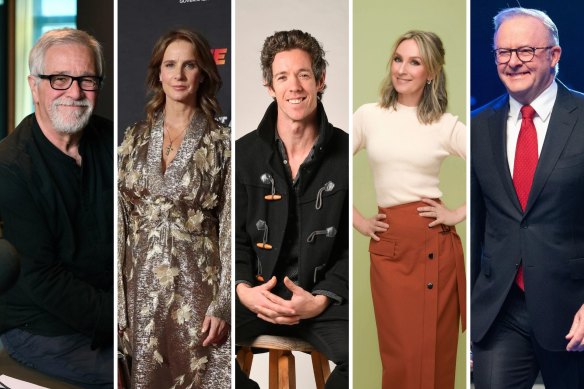
From left: Neil MItchell, Rachel Griffiths, Bob Murphy, Lisa McCune, Anthony Albanese.Credit: The Age
The Age has been a part of Victoria’s fabric for 170 years. Throughout its history, this masthead has celebrated the successes of Australians on the stage, screen and sporting fields, and scrutinised the actions of public office holders.
Here, some notable Australians – many Age readers since their youth – reflect on what The Age means to them.
Steve Bracks was the Victorian premier between 1999 and 2007.
The Age is in Melbourne’s DNA. It has chronicled our great city’s politics, rich cultural life and sporting obsessions.
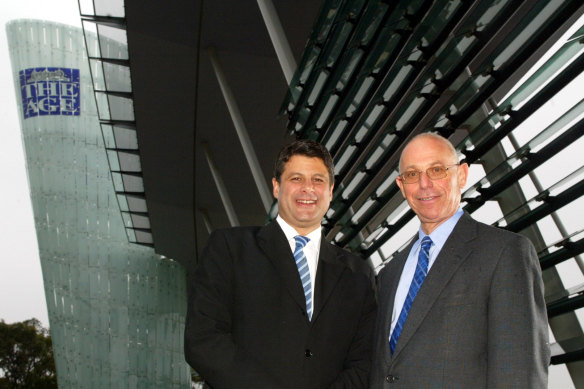
Then-premier Steve Bracks (left) with then-Fairfax chief executive Fred Hilmer at the opening of The Age’s (now former) print centre in Tullamarine in 2003.Credit: Paul Harris
I grew up reading The Age – essential reading in our household along with the Ballarat Courier. I moved to Melbourne and was elected to the Victorian parliament. My engagement with The Age shifted when I became leader of the opposition in early 1999.
The Age was a battleground. It was where we wanted to get our stories told. We relied on The Age to help hold the Kennett government to account.
My favourite Age headlines are from this period. On the eve of the September 18 state election, The Age front page story was headlined: “Last poll tips easy Kennett victory”. Four weeks later, on October 18, after we won the Frankston byelection and the support of the three independents, I woke up to: “It’s Premier Bracks”!
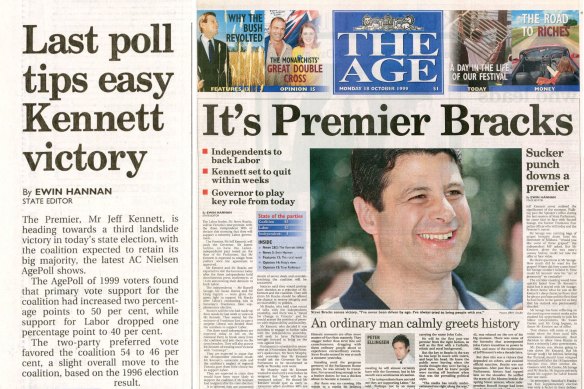
How things changeed a month apart: The Age front pages from the 1999 election.Credit: The Age archives
In government, my relationship with The Age shifted again. Now I had to deal with The Age holding my government to account! There was a respectful tension in the relationship.
When I retired from politics, it was a relief to go back to being a passive reader. I still read The Age every day. Congratulations on 170 years of important, quality journalism.
Actor Rachel Griffiths was born and raised in Melbourne. The film and TV star has featured in The Age both for her silver and small screen work including Muriel’s Wedding, Hilary and Jackie, Six Feet Under and Total Control, and her local activism. Griffiths protested against Crown casino’s opening in 1997, and campaigned for the restoration of the historic Palais Theatre.
I have always been an Age newspaper girl – preferably hard copy and always Saturday – with a cup of tea and to find some sun.
When I moved to Los Angeles, I found the one newspaper stand that could order in The Saturday Age newspaper. It would arrive a week late via air express – and I would savour every page – as I was, for those minutes, home.
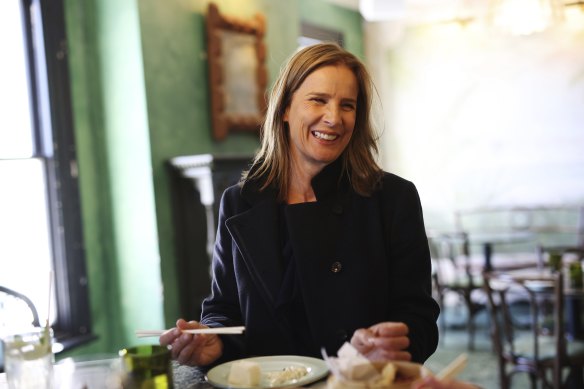
Rachel Griffiths photographed for the Lunch With column in 2021.Credit: Paul Jeffers
When I met my husband, Andrew, he had been for many years a tenant of the Rotherfield mansion (later known as Sherwood Hall) in Elwood. It was a grand and decrepit Italianate mansion run as flats by the indomitable Mira Unreich – who lived at the front flat where she had raised her family including the author, Rachelle.
I loved this piece of Melbourne’s history – and his light-filled apartment – possibly the old billiard room at the rear of the mansion, overlooking its 100-year-old lawn – and we kept it for over 10 years as our Melbourne base while we lived in the USA.
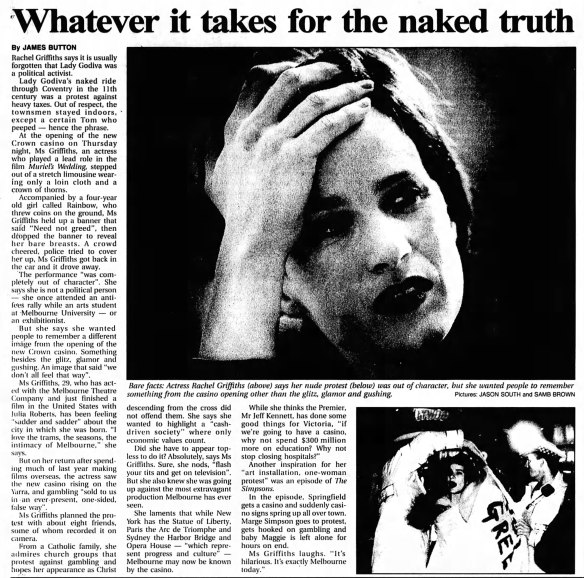
The Age reported on Rachel Griffiths’ Crown casino protest in 1997.Credit: The Age archives
It was some years later when I wondered to Andrew, “Who had lived there? Who had built it?”
“Oh, it was Joseph Syme of The Age’s Symes,” he mentioned. “Ahh,” I thought – it’s no wonder I feel as happy at home inside these walls as I felt inside its founder’s publication.
I still order the Saturday and Sunday paper and still love finding the sun with a cup of tea and reading my favourite columnists – tracking time and place in a decades-long ritual.
Myf Warhurst grew up in regional Victoria and started writing arts and music stories for The Age after studying at the University of Melbourne. She went on to work in TV and radio, including Spicks and Specks, Eurovision, The Project and Bluey.
I grew up in a small country town in Victoria at a time when the internet hadn’t yet been invented. As a lover of the arts and music, The Age was my lifeline to the wider world. The weekly music and arts liftout, the EG, was my bible, and I pored over it religiously every Friday, imagining what I could be doing that weekend if I could access all the events that had been highlighted that week.

Myf Warhurst photographed for the Lunch With column at home during the coronavirus pandemic in 2020.Credit: Joe Armao
When I moved to Melbourne as a young adult, I saw the impact that The Age had on the culture of the city. The paper deeply valued and supported the arts and the culture it created; hence the city and its people did, too. I truly believe that this makes Melbourne so distinct from other cities.
I was honoured and proud to be able to contribute to The Age as an arts writer, and to the EG in particular, for a few years thanks to the support of wonderful EG editors John Mangan and Melissa Fyfe, who helmed EG during my time as a freelancer. I truly believe that this positive formative experience set me on my path today, and I’ll always be grateful to The Age and the staff I worked with for the opportunity.
Neil Mitchell dominated Melbourne radio airwaves for more than three decades as the host of 3AW’s morning program. He was a reporter, news executive and sports editor at The Age from 1969 to 1983.
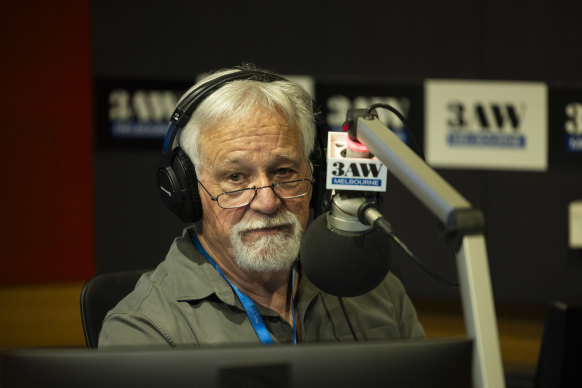
Neil Mitchell’s final morning in the 3AW studio in December 2023.Credit: Wayne Taylor
November 11, 1975: I was in the office of the chief of staff when a copy boy ran in with a message the telex had just rattled through: the Whitlam government had been sacked. As industrial reporter, I went directly to the office of ACTU and ALP president Bob Hawke, and reported the union fury.
There was talk of violence in the streets, blood in the gutters. The legendary Age editor Graham Perkin had died one month earlier.
Les Carlyon, only 33, was in charge and led the paper through this extraordinary day in history in a manner which shows why he became one of the most respected journalists in Australian history.
The front page, on which I was honoured to have a byline, displayed his design genius, and it was his decision – in consultation with his team – to take an editorial stand declaring the sacking wrong, a “triumph for narrow legalism over common sense”.

The Age’s front page reporting on the dismissal of Gough Whitlam.Credit: The Age
The Age was the first paper to argue such a case, one history judges well. In the early hours, most of the staff attended a venue that probably shouldn’t have been serving drinks after midnight, and basked in the sheer brilliance of the historic paper they had helped produce.
It remains one of the most visually arresting front page designs in history, and the editorial stands as proof of what The Age was that day: independent, professional and brave.
Bob Murphy is a former Western Bulldogs captain and Age contributor.
If I close my eyes to remember my family home growing up, I can recreate the kitchen setting in an instant. The oversized table is completely covered with discarded tea and coffee mugs, blue pens, crumbs, two dinner plates also crumbed and a single jar of opened marmalade. There is no tablecloth. Not your typical one, anyway. There is just The Age. The crossword is completed, but there’s an assortment of handwriting. This was our family playground, stadium and formal setting.
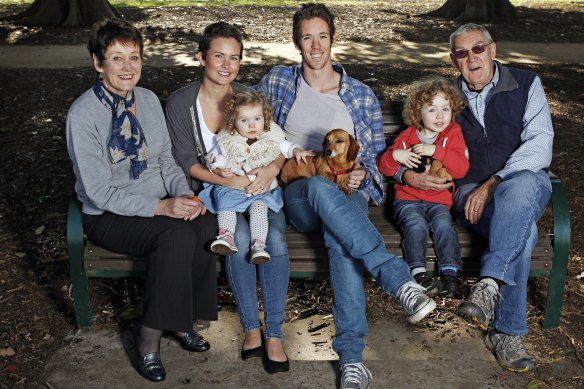
A family affair: Bob Murphy (centre) photographed in 2011 ahead of his 200th match for the Western Bulldogs with (from left) mother Monica, wife Justine, daughter Frankie, dog Arthur, son Jarvis and father John. The three generations are all Age readers.Credit: Paul Rovere
I came home this afternoon to find my family dining table covered in pretty much the same way. The crossword was incomplete and incorrect, and Vegemite had subbed in for marmalade, but there was the beautiful, eerie similarity that is family life. The Age was open, dissected, ripped apart. Devoured.
Takes me back, takes us forward.
Multi-award winning playwright Hannie Rayson was born and studied in Melbourne. Rayson’s first major success was Hotel Sorrento, which has become an Australian classic. Her other plays include: Mary, Room to Move, Falling From Grace, Competitive Tenderness, Life After George, Inheritance, Two Brothers, The Glass Soldier and The Swimming Club.
My relationship with The Age is longstanding and personal. But I wasn’t born into it. My birth notice appeared in The Sun. In fact, when I was growing up, our family were Sun people. We got the Sporting Globe on Saturdays.
Then, sometime in the mid-1970s, we became Age people. My mum engineered the gradual and subversive shift. After that, all the major milestones of our lives were recorded in The Age: engagements, marriages, births and deaths.
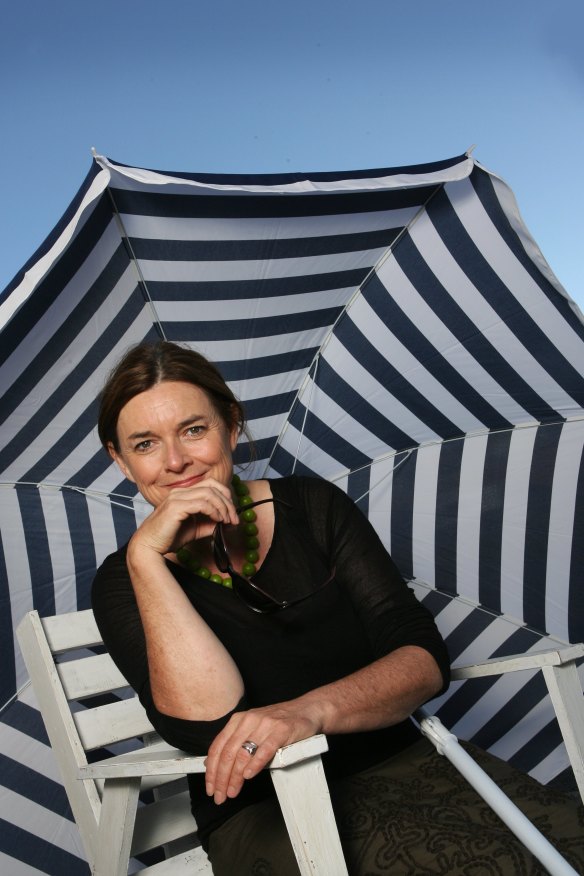
Hannie Rayson, photographed in 2010 before the opening of her play The Swimming Club.Credit: Rebecca Hallas
I got my Higher School Certificate result in The Age. I bought my first car, found jobs and houses to share in The Age Classifieds. I spent my Saturday mornings circling what to see and do: pictures, theatre, bands, markets, demos. And then, all the new books.
The Age has provided the intel to being both a cool kid and a citizen. It has been a companion, a trusted godparent, a place of belonging.
Prime Minister Anthony Albanese
Great newspapers are the beating heart of great cities. I learnt this early in life. My first paid job was selling newspapers after school on a corner of Sydney’s central business district for office workers to read on their bus or train journey home. At $10 a week, plus tips, it provided pocket money for the week.
The media landscape has moved on significantly since then. Readers these days carry the news in the palm of their hands 24/7. People are much more likely to read the latest developments on their smartphone than linger over the printed word. Technology has upended the news business. But the fundamentals of good journalism and great storytelling remain the same.
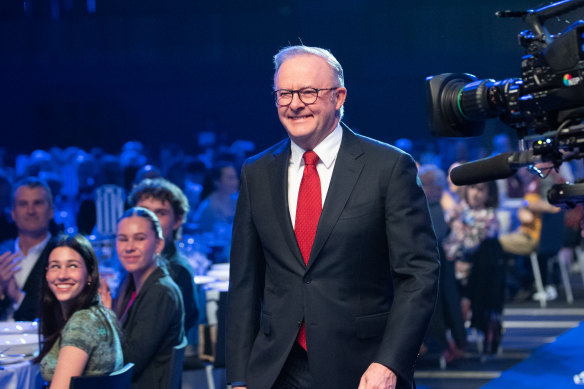
Prime Minister Anthony Albanese at the 2024 AFL grand final breakfast.Credit: Simon Schuluter
The Age has endured for almost two centuries because this news service is an essential part of daily life for Melburnians. The Age is also a great national newspaper. Age investigations have not only picked up a swag of awards over many decades – they’ve shone a light in the darkest corners.
The Age has been telling the story of a city, and bringing the nation and the world to Victorian readers, for 170 years. This is a remarkable achievement. Congratulations.
Senator Jane Hume was born and raised in Melbourne. She has been a Liberal senator for Victoria since 2016.
As a parochial Melburnian, I grew up with Tandberg cartoons and the Odd Spot, and the gleeful indulgence of lying on the couch in a dressing gown, with a cup of tea and a piece of toast, dreaming of imaginary holidays while reading the “52 Weekends Away” edition of the Good Weekend.
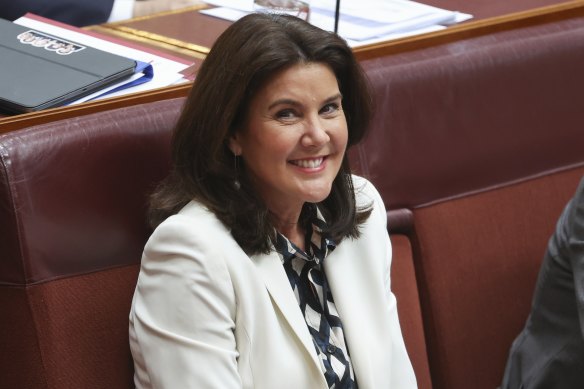
Senator Jane Hume during question time in September.Credit: Alex Ellinghausen
Many years on, I still associate politics in The Age with the inimitable Michelle Grattan. She blazed a trail for the many women of the Canberra press gallery who have followed, and set the standard for the current cadre of talented Age journalists who continue her legacy of fairness and accuracy, and a low tolerance for ego, obfuscation and political chicanery.
Finally, at the risk of offending others and dooming myself to unflattering photographs for the rest of my career, I have to say it; Alex Ellinghausen has an uncanny and unparalleled ability to capture a political moment in time.
Restaurateur-chef Michael Ryan, from Provenance in Beechworth, won The Age Good Food Guide chef of the year and restaurant of the year awards in 2013. Provenance, which opened in 2009, has received two hats in the guide for the past nine years.
The Age Good Food Guide has been part of my life for nearly 20 years after the restaurant I was working at, Milawa Cheese Factory Restaurant, received a hat (remember it’s the venue, not the chef, that is hatted). I obviously didn’t realise that this would be the first of 19 years of running a restaurant awarded chef’s hat in the guide.
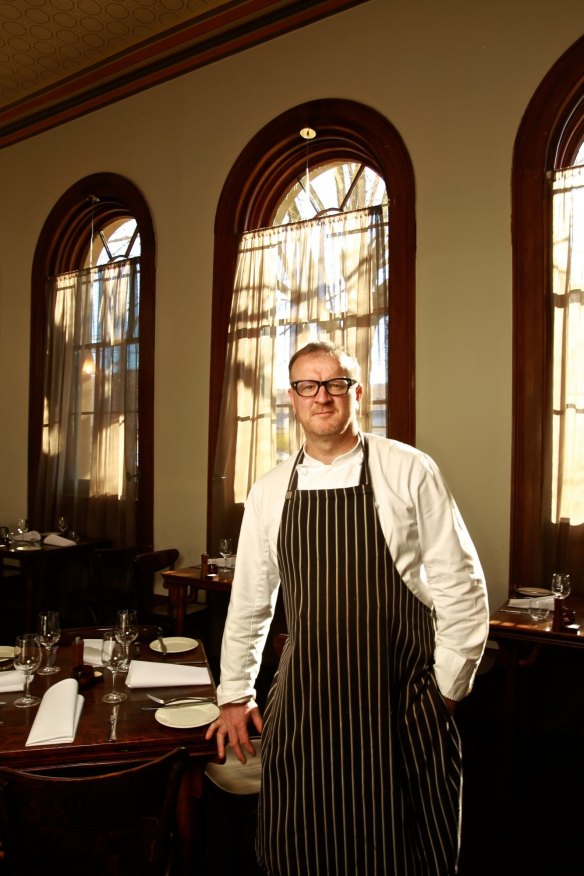
Chef Michael Ryan of Provenance restaurant in Beechworth.Credit: Rodger Cummins
Certainly, how the guide is used and viewed has changed markedly over the years. In the mid-2000s, the internet was growing fast, but printed media was still king. The guide back then was the premier source for restaurant information, and while there are definitely more sources now – some more reliable than others – it is still an important benchmark for the industry.
They do put in the hard work, sending reviewers to every restaurant (rather than just doing a mash-up of other internet reviews as some guides do). We have been reviewed every year, usually more than once, and I can only count on one hand the number of times I have clocked the reviewer in my restaurant (of course, there is not a great deal you can change at that point).
Without the continued recognition from The Age Good Food Guide, I don’t think we would have been able to operate as long as we have in regional Victoria. The cost of covering regional Victoria would take a big chunk of their budget, and that they continue to champion the regions is admirable.
Melbourne-based chef and restaurateur Andrew McConnell is the creative force behind hospitality group Trader House, with venues such as Supernormal, Cutler & Co, Marion, Cumulus Inc and Gimlet. He has been awarded The Age Good Food Guide chef of the year three times.
170 years is incredible. The Age’s Epicure and now Good Food was, and is, such a big part of every chef and restaurateur’s lives for so many years. Many of us still call the Tuesday edition Epicure! I vividly remember being awarded my first chef’s hats for Diningroom 211 back in 2001.
Of course, we were all so excited but, I have to admit, the joy was accompanied by utter relief at the same time. As a first-time restaurateur – and let’s be honest, still now – the “hats” are such an important accolade and continue to hold such weight in the dining community.
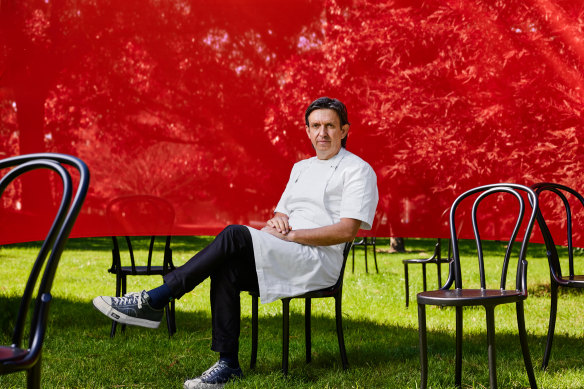
Andrew McConnell at the World’s Longest Lunch during the Melbourne Food & Wine Festival 2024.Credit: Shelley Horan
Actor Lisa McCune rose to fame as Senior Constable Maggie Doyle in Blue Heelers, filmed in Victoria in the 1990s. McCune, who continues to act on screen and stage, has spoken in the past about being riveted by “The Age Tapes” investigation as a teenager in the 1980s.
The biggest newspaper in town … literally. It was a weekend treat to cover the dining table and spend hours lost in your broadsheet pages. Your size meant less frequent page turning … but a nightmare to wrangle on a plane!
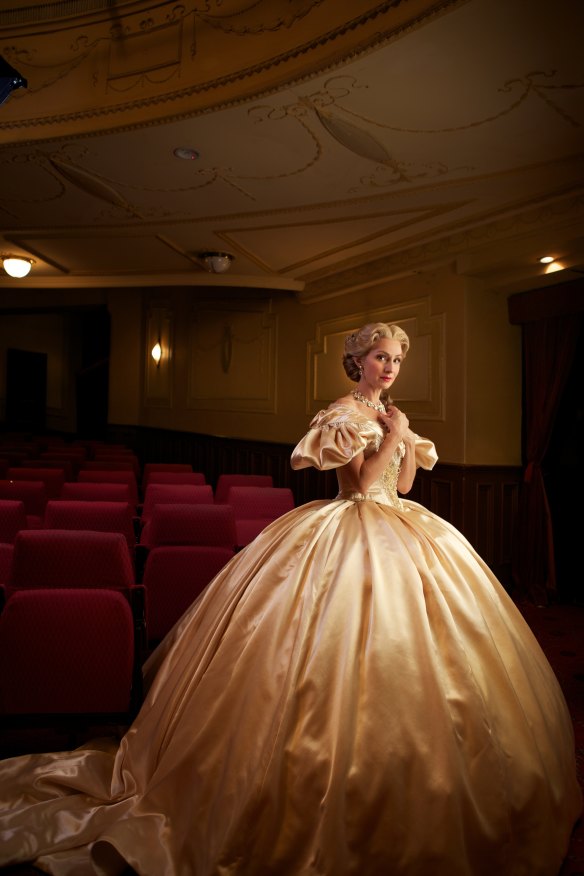
Lisa McCune before the opening of The King and I in 2014.Credit: Simon Schluter
“The Two of Us” column in the Good Weekend was always my first stop, and during the week, the Green Guide on Thursdays. At work on Blue Heelers in the ’90s, the crossword appeared every morning on John Wood’s desk – Friday was always a mind-bender courtesy of the legendary DA.
I’ve had the great fortune to work with fine photographers from the paper (Simon Schluter shot my favourite portrait in 2014 for The King and I) and talk to journalists who spend the time to get a story (Karl Quinn!).
And how good is it to devour a big story … researched, fact-checked, important. The Age in Melbourne for 170 years! Impressive. A very happy birthday.
Start the day with a summary of the day’s most important and interesting stories, analysis and insights. Sign up for our Morning Edition newsletter.